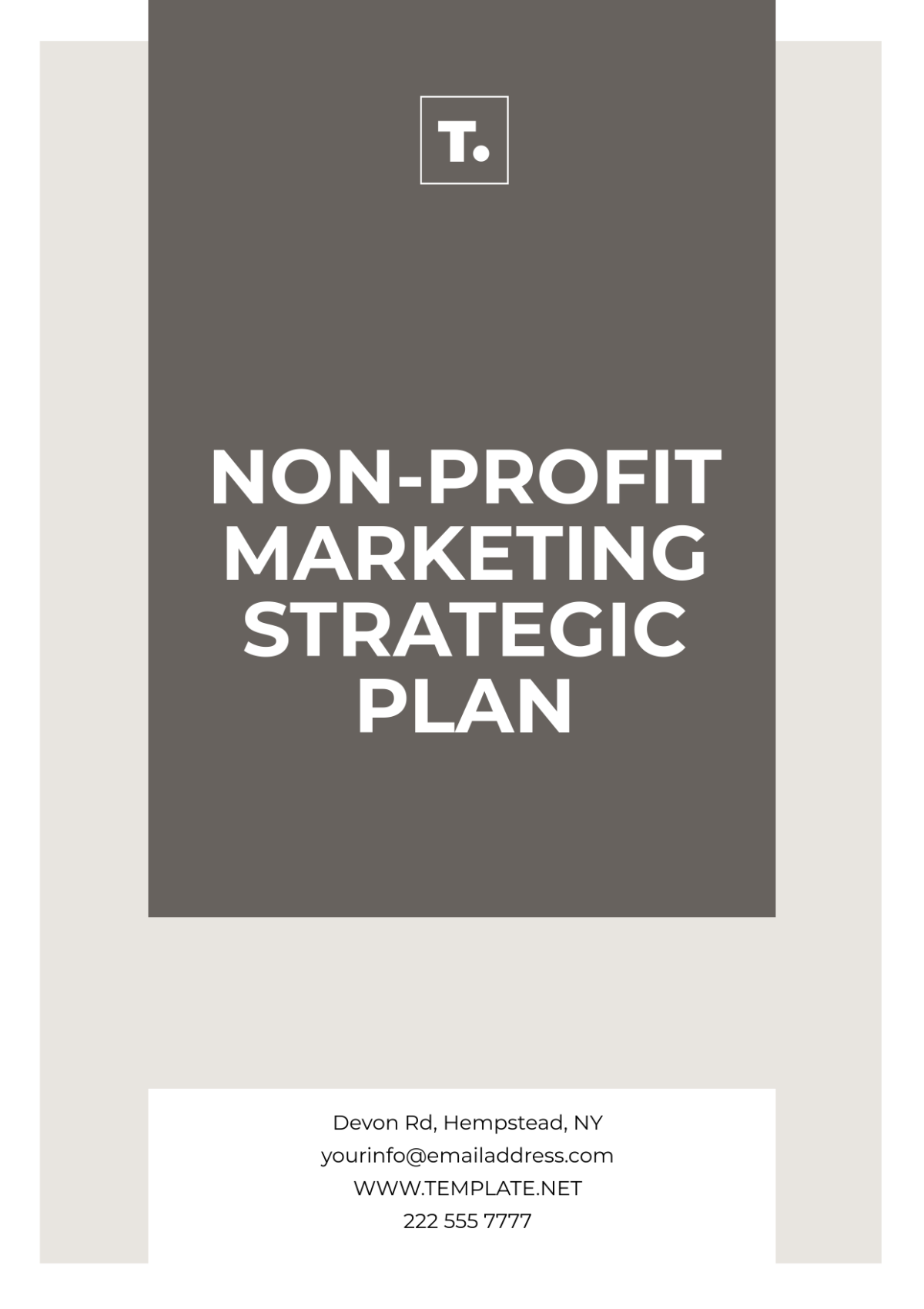Free Non-Profit Marketing Strategic Plan

Prepared by: [YOUR NAME]
Date: [DATE]
I. Executive Summary
This strategic marketing plan outlines the initiatives and goals for the upcoming year, focusing on increasing visibility, engagement, and funds for our non-profit organization. Key objectives include enhancing our digital presence, strengthening community relationships, and diversifying income sources.
II. Organizational Overview
A. Mission and Vision
Our mission is to improve the quality of life for underserved communities by providing essential services and advocacy. Our vision is a world where every individual has equal access to opportunities and resources necessary for a dignified life.
B. Core Values
Our non-profit is guided by the core values of compassion, integrity, accountability, and innovation. These values shape our actions and define our commitment to the community.
III. Target Audience
A. Primary Audience
Our primary audience consists of individuals aged 25-45 who are interested in social justice, community service, and philanthropic activities. They are active on social media and engage with community events and online campaigns.
B. Secondary Audience
Our secondary audience includes corporate partners, local government agencies, and other non-profit organizations interested in partnerships and collaborations to amplify community impact.
IV. Marketing Goals and Objectives
Increase digital engagement by 30% through social media campaigns and email newsletters.
Expand donor base by 20% with targeted fundraising initiatives and events.
Enhance community partnerships by developing 5 new collaborations by year-end.
V. Marketing Strategies
A. Digital Marketing
Leverage social media platforms such as Facebook, Instagram, and LinkedIn to reach broader audiences. Implement email marketing campaigns to sustain engagement with current and potential donors, including monthly newsletters and special announcements.
B. Community Engagement
Host quarterly events, such as volunteer engagement days and informational workshops, to strengthen community ties and raise awareness about our initiatives. Work with local media to promote events and success stories to reach a larger audience.
C. Partnership Development
Identify and approach potential partners in the corporate and non-profit sectors to create collaborative projects that align with our mission. Foster existing relationships with regular communication and joint initiatives.
VI. Budget Allocation
Category | Percentage of Total Budget |
|---|---|
Digital Marketing | 40% |
Community Engagement | 30% |
Partnership Development | 15% |
Administrative Costs | 15% |
VII. Evaluation and Monitoring
Regularly measure the effectiveness of marketing efforts through key performance indicators (KPIs) such as social media engagement rates, email open rates, event attendance, and donation figures. Conduct quarterly reviews to assess progress against objectives and adjust strategies accordingly.
VIII. Conclusion
By following this strategic marketing plan, our non-profit aims to enhance visibility, engagement, and resources to serve our mission effectively. The outlined strategies and objectives will guide us in achieving significant growth and impact throughout the upcoming year.
- 100% Customizable, free editor
- Access 1 Million+ Templates, photo’s & graphics
- Download or share as a template
- Click and replace photos, graphics, text, backgrounds
- Resize, crop, AI write & more
- Access advanced editor





























